Former Nakazawa Elementary School
The Komagane City Local Museum, mentioned in the previous article, is an annex of the Komagane City Museum, and the main building is located on the premises of the Komagane City Sogo Bunka Center.
In addition, Komagane City Folk Museum is located on the east side of the Tenryu River. The former Nakazawa Elementary School building is used as a folk museum.
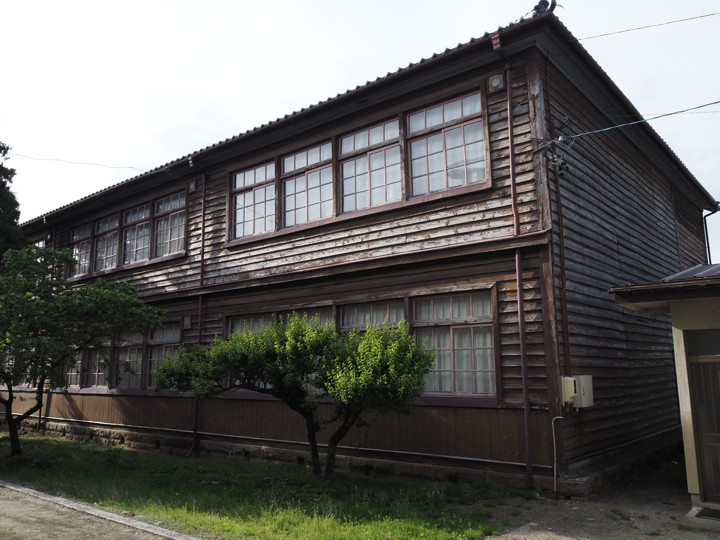
It was Sunday when I visited Komagane City, the museum was closed. I knew I could not see the inside of the building, but since I had come all this way, I just took a look at the outside.
The former Nakazawa Elementary School is located next to the current Nakazawa Elementary School. This area used to be Nakazawa Village before Komagane City was established in 1954. Nakazawa Village was formed in 1875 through the merger of 10 villages: kise, Nagamiyama, Suganuma, Kamitakami, Shimotakami, Nakayama, Osogura, Nakasogura, Honsogura, and Hara.
Before Nakazawa Village was established, the school system was promulgated in 1872.
In that year, Junkai School was established in Hozenji Temple in Shimotakami Village, which is said to be the beginning of Nakazawa Elementary School. In the same year, Yokei School was also established in Nakasokura Village.
Junkai School moved to Fukuoka Shirine in Suganuma Village in 1874 and was renamed Suganuma School the following year.
In 1874, Yokei School moved to Honsokura Village and became Sanyu School (renamed Sokura School the following year).
After the establishment of Nakazawa Village, branch schools of Suganuma School were established, and later the branch schools became independent, and Narahashi School was established in the Nakayama area, then in 1886, under the Elementary School Ordinance, the schools were merged and renamed Nakazawa School. (Each school building continued to exist as branch schools.)
In 1889, the Town and Village System was enacted and the principle of one school per village was adopted. In that year, the main school building of Nakazawa School was newly built.
About 20 years later…In 1907, the Elementary School Ordinance was revised and compulsory education became six years (six years of regular course and two years of advanced course). The school had become too small, so it was decided to rebuild at a different location.
However, when they applied to the prefectural government for construction, the application was rejected because the plans were too large and could not be approved. After discussions in the village, it was decided that the construction would be funded entirely by donations from the villagers.
The construction began in 1907, and the new school building was completed two years later in 1909, the south school building and the west half of the north school building. The gymnasium was moved from its original location.
In 1912, the eastern half of the north school building and a warehouse were added.
The current building was the one built in 1912, while the one built in 1909 was demolished and no longer exists.
Let’s take a look around the school building. Here is the entrance. On the left side of the building, there must have been a school building built in the Meiji era.
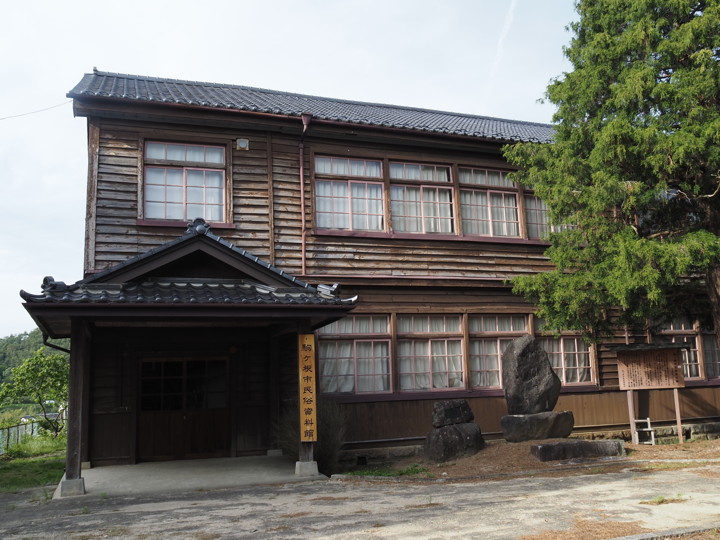
An explanatory board was erected in front of the building.
In 1982, the current Nakazawa Elementary School building was completed, and the old school building became the Komagane City Folk Museum.
The school building has hardly been remodeled, and in 1996, it was designated as a tangible cultural property of the city as the only remaining wooden school building in the city.
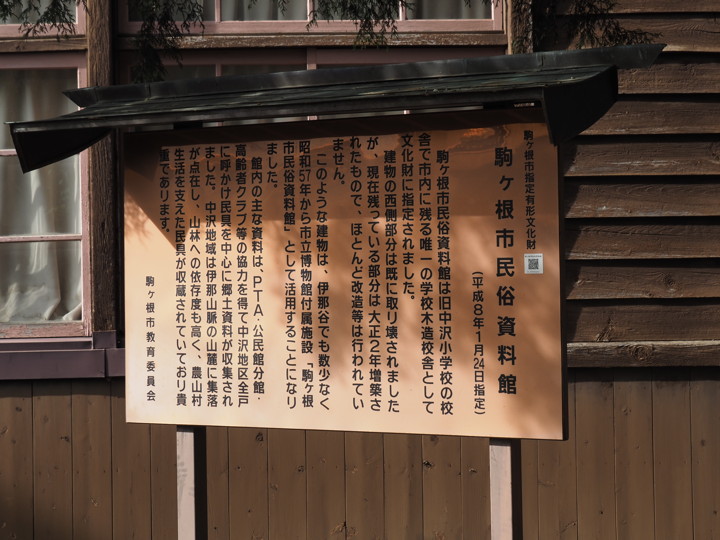
In front of the school building, there is a stone monument commemorating the school’s centennial. Oh no, I forgot to check the back side of the monument.
The left monument is also commemorates the school’s centennial, and it says, “All PTA directors in 1971".
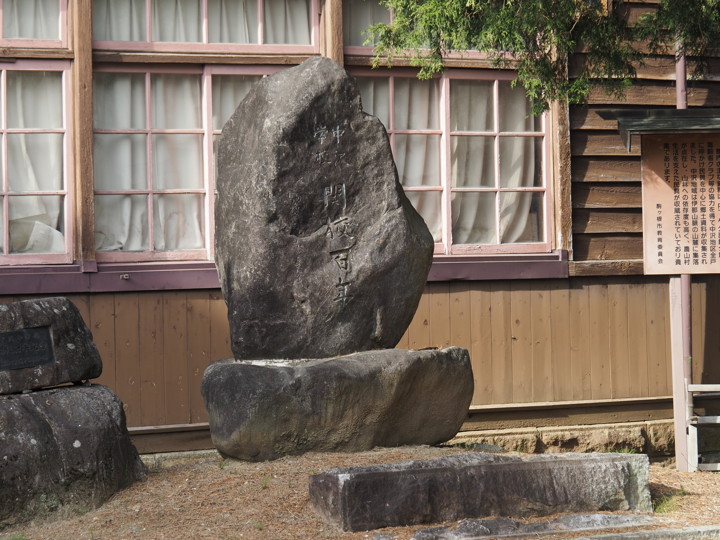
Let’s go around to the back side of the building.
The window frames are still wooden with no sashes.
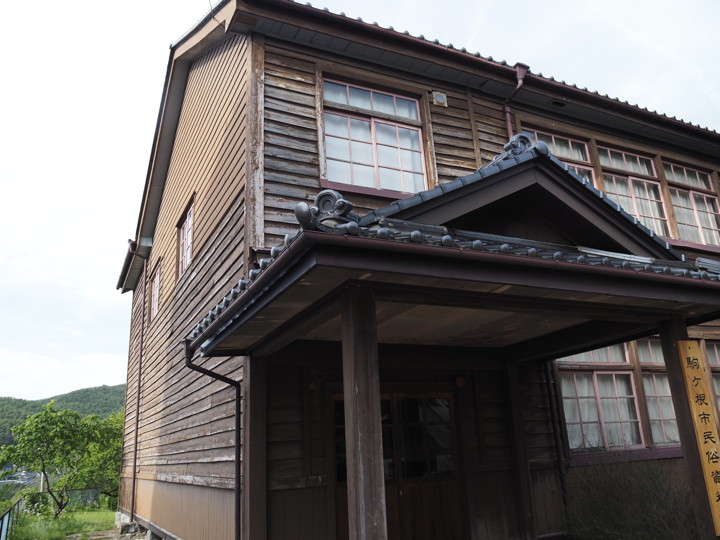
The color of the wall on the north side is different; the roof was replaced in 1991, and the interior and exterior walls were repaired in 1996, but the difference in color between the south and north sides is a bit strange.
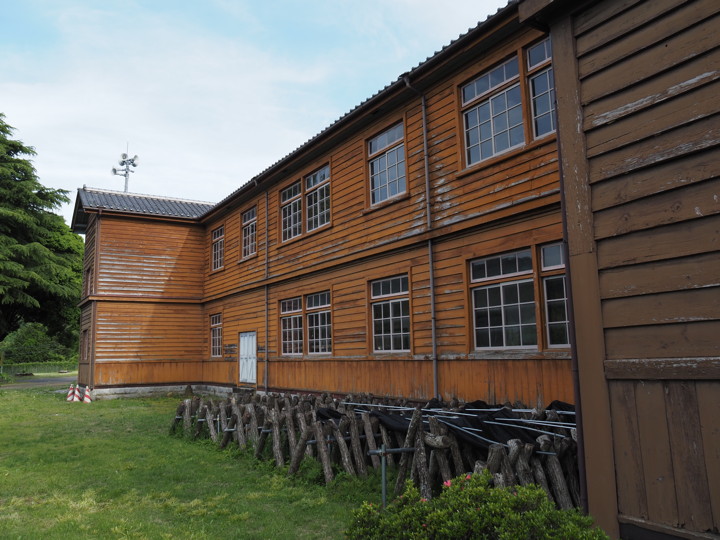
The entrance on the north side.
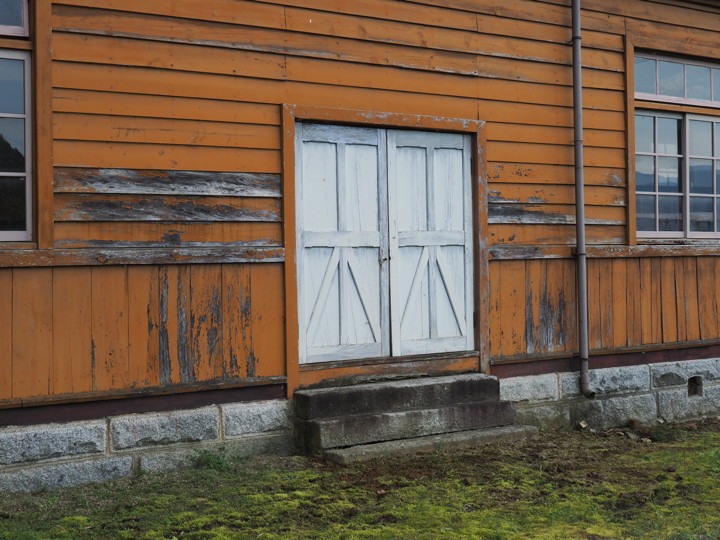
East wall. The second floor window on the right side is a little low, so this must be a staircase.
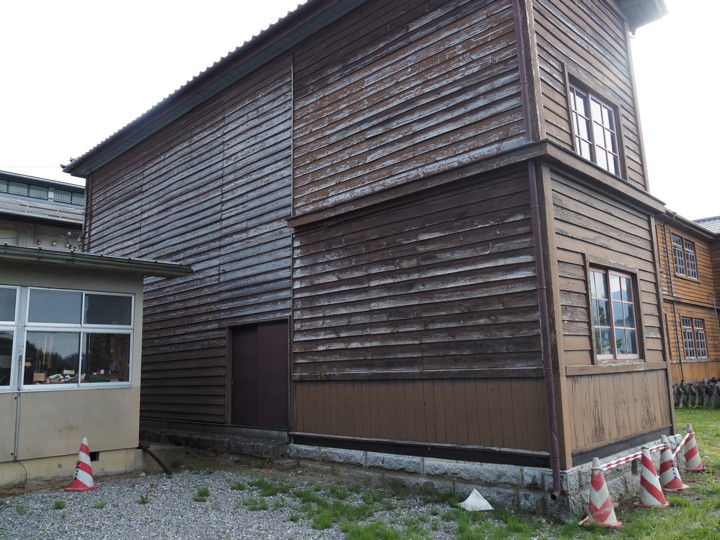
I finished circling around the building.
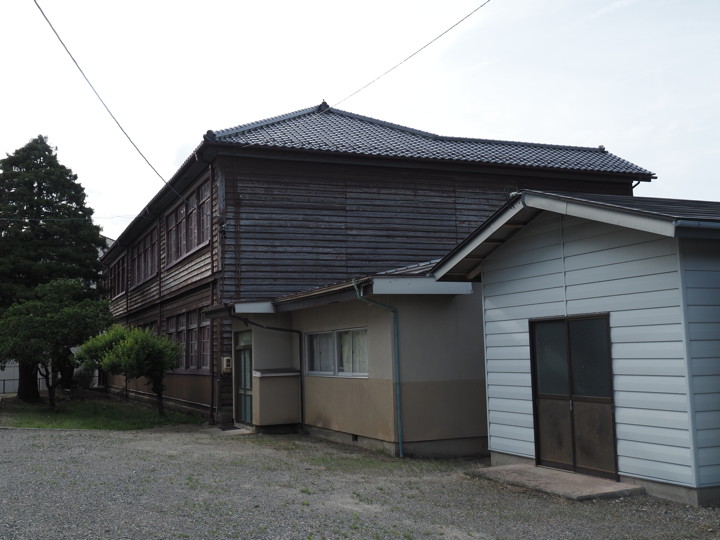
The inside, local materials, mainly folk tools, are stored. The PTA began collecting the materials in 1965, and in 1971, when the school celebrated its centennial, the PTA, the community center branch, and the senior citizens’ club called on all households in the Nakazawa area to join in the collection.
It is said that approximately 2,000 items are in the collection.
If you want to take a look inside, just ask at the community center next door and they will open it for you.
The museum is open from 8:30 to 17:00 on weekdays. Admission is free.
[Reference] (all were written in Japanese)
“Nakazawa Village History" (Hayashi Asaji / 1922)
“100 years history of Nakazawa School" (Nakazawa School Centennial Commemorative Project Executive Committee / 1972)
“Komagane City History, Contemporary Edition, Vol. 1" (Komagane City History Compilation Committee / Komagane City History Publication Association/1979)
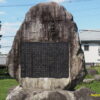
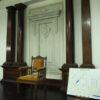
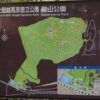
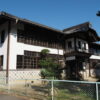
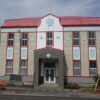
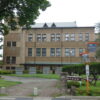
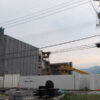
Discussion
New Comments
No comments yet. Be the first one!